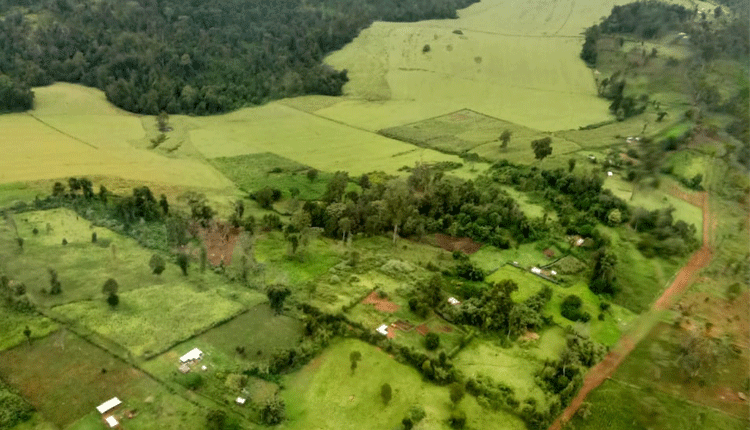Mau forest on the mend two years after eviction of settlers
By Peter Leshan, October 4, 2021Two years after the government kicked out more than 10,000 families from the 46,000-hectare Maasai Mau, the forest which was on the verge of depletion is slowly regenerating.
Rivers, whose source was the water tower, and which were drying up, are flowing again.
The water level of the Mara River, the lifeline of tourism in Masai Mara and Tanzania’s Serengeti National Park, is rising.
The world-famous annual migration of wildebeests from Serengeti in Tanzania to the Mara promises to be even more spectacular in coming years.
“In the next three to five years, the migration will be interesting as it was before the water level started receding.
Apart from the low level, sand and soil deposits have been choking this river which is important to tourism in Kenya and Tanzania” said Nick Murero, the Mara-Serengeti Ecosystem Coordinator for Lake Victoria Basin.
He said Tanzania saw Kenya’s previous reluctance to end the destruction of the forest as an attempt to destroy its economy which largely depends on tourism.
Ewaso Nyiro River, which drains into Lake Natron in Tanzania, Talek River which also serves Masai Mara, Amalo, Sikinder and Entoroboni rivers which had been reduced to streams, are bubbling with life.
Trees which were planted by the government, its agencies and other donors immediately after the eviction are flourishing and are covering the once bare grounds.
Tea bushes in the forest which were planted by Nyayo Tea Zones are now big trees as the rain patterns which changed from 1998 when the invasion started, is slowly returning to normal.
Isaac Kalua, the former chairman of Water Towers Agency and an environmental activist, said history will treat the Jubilee government kindly for putting its foot down and saving the Mau, adding that the forest was now regenerating at a fast pace.
Crop failure
“Clearing the forest of settlements and ending other forms of degradation had for many years been like a never ending song for past governments.
This one decided to do it despite looming political fallouts and other dangers,” he said.
Since 1998, the rain has been erratic with wheat, which Narok is the leading producer in the country, and maize farmers recording dismal to total crop failure.
Erisha Kuluo, the secretary of Narok Farmers Association, says that this season and the previous one both wheat and maize farmers recorded fair harvests compared to previous years.
“We are now starting to see the fruits of the removal of settlers in the forest. Farmers are now harvesting an average of 16 bags per acre, up from five or some harvesting seasons, zero.
If settlers will not be allowed back, we will surely go back to normal,” he said.
A joint Mau security team composed of Kenya Wildlife Service and Kenya Forest Service (KFS) rangers and the National Police Service personnel have sealed off the forest to prevent encroachment and cattle grazing.
“We have been having a hard time with grazers. Otherwise, the forest is completely secured,” says Muraguri Mwai, the outgoing KFS Narok County Ecosystem Conservator and who was the head of the Joint Mau Security Enforcement.
Wildlife groups led by The Rhino Ark are planning to fence it to prevent encroachment.
Christian Lambrechts, the CEO of the Rhino Ark and the former head of United Nations Environmental Programme (UNEP), said Maasai Mau forest which is part of the 22 forest blocks that form the 427,000 hectare Mau Complex is now secure, adding that estimates of 2007-2008 indicated that energy, tourism and agriculture was losing Sh21 billion annually because of the destruction.
His agency is planning to fence South West Mau, a section of the complex which is the source of Sondu Miriu River where about 6,000 squatters were removed in 2009.
“We are raising funds and putting basics in place to start fencing the South West Mau section.
Later, we will do the same in Maasai Mau,” said Lambrechts whose agency has fenced hundreds of acres of the Aberdare forest.
The conservation efforts are bearing fruits even as most of the former settlers are still struggling to find new homes after living in the forest for 23 years.
Some who had parcels of land elsewhere went back while others are being accommodated by friends and relatives.
Settlers agony
William Cheruiyot, who lived in Sierra Leone area and who moved to Olenguruone in Molo with his family, said life had been difficult for former settlers who, he said, bought land on willing seller-willing buyer basis. “It’s been a tough two years for many,” he said outside a makeshift house.
Cheruiyot accused the government and politicians of neglecting them.
“The eviction broke families. Some children are now separated from parents and guardians and their future is not assured,” he said.
Mary Chelel, 32, a single mother of four who lived in Enoosogon area, said had not found a new home and her children had dropped out of school.
“I do odd jobs like house cleaning and feeding other people’s babies to buy food and pay rent. School levies are a luxury,” said Chelel who lives in Mulot, Bomet County. She hopes to return to her former home one day.
